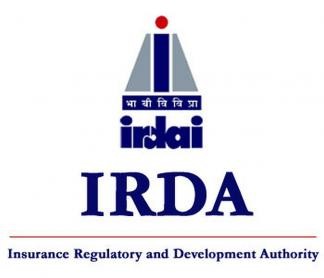Every insurer has to formulate a business plan in advance on an annual basis, which has to be approved by the respective board. The plan should, at the minimum, clearly state the the projected requirements of capital during the said financial year, projection of solvency margin on a quarterly basis, the projection of expense of management (in rupees as well as percentage of gross premium written in India) and the compliance or otherwise with the limits of expenses of management
After new EoM norms are implemented, there will be discontinuation of the current segmental compliance and reporting requirements by the general insurers which will lead to rationalisation of other compliance requirements
Hyderabad:
In a major relief to the non-life insurers particularly private sector general and health insurers, revamping its existing regulations, the insurance regulator IRDAI on Monday has unveiled the concept of “A single limit on management expenses” termed as `Expenses of Management” (EoM) that includes all expenses by general insurers like remunerations of employees and other distribution and marketing costs and has capped it at 30 per cent of its annual gross premium.
Outlining its exposure draft on “Expenses of Management of Insurers Transacting General or Health Insurance Business Regulations, 2022″. for which IRDAI wants all stakeholders to submit their feedback by 22 August 2022, it has said,“No insurer carrying on General Insurance Business or Health Insurance Business in India, spend an amount as exceeding the amount computed as lower of 30 percent or Expense Rate, multiplied by gross premium written in India in that financial year. The amount of commission or other remuneration paid to insurance agents and insurance intermediaries in respect of their business transacted in the financial year as is allowed by the IRDAI from time to time.”
EoM to include all expenses in the nature of operating expenses, commission, brokerage/remuneration, reward to the insurance agents, and intermediaries,commission and expenses on reinsurance inward, which are charged to the Revenue Account.
However, the regulator has allowed additional allowance to the general insurers over and above 30 per cent EoM on many areas.
An insurer having its principal place of business in India and having branch offices outside India will be allowed an additional allowance towards share of head office expenses. But such allowance should not exceed 10 per cent of the gross premium income written outside India through such branch during the year.
An insurer reporting growth in the gross direct premium sourced from “Rural sector PMSBY, PMJAY and PMFBY’ business will also be allowed an additional allowance,that should not exceed 10 per cent of the incremental premium over the previous financial year, sourced from the rural sector and the above specified schemes.
An insurer will also be allowed an additional allowance towards the Insurtech expenses incurred to the extent of 20 percent of such expenditure.
The IRDAI has also allowed an additional allowance for the expenses incurred towards the implementation of IndAS to the extent of 100 percent of such expenditure.
An insurer will be allowed an additional allowance for the expenses incurred towards the insurance awareness to the extent of 2 percent of expenses limit computed as per the existing regulations.
After new EoM norms are implemented, there will be discontinuation of the current segmental compliance and reporting requirements by the general insurers which will lead to rationalisation of other compliance requirements.
Every insurer will have a well-documented policy approved by its Board on annual basis, which has to mandatorily cover:
-Measures to bring cost effectiveness in the conduct of business and reduction of the expenses of management on an annual basis,
-Manner of transfer of benefits, arising from reduction of expenses and/or from the directly sourced business to the policyholders by way of reduction in the premium.
Among other topics, the annual plan should, at the minimum, clearly state the the company’s projected requirements of capital during the said financial year, projection of solvency margin on a quarterly basis, the projection of expense of management (in rupees as well as percentage of gross premium written in India) and the compliance or otherwise with the limits of expenses of management.
The business plan should be monitored by the Board of the company at regular intervals for compliance with the expenses of management limit and infusion of the additional capital in line with business plan, said the IRDAI.
According to analysts, a single limit on EoM of 30 per cent will provide advantages to private sector insurers over their public sector counterparts as the latter are spending almost 75 per cent of their expenses on salaries and remunerations and the rest on marketing and distribution while it is other way round for the private sector insurers.
The private sector insurers had earlier had demanded a higher EOM and a committee formed by General insurance Council under Ritesh Kumar, MD & CEO, HDFC Ergo General Insurance had strongly recommended for a single limit on EoM.
.


While capping total expenses is a good move to check questionable practices by private sector non life players, the regulator had left lot of loopholes to camouflage such questionable practices as additional allowable expenses.
Normally all such regulations tend to benefit private players since PSUs have a lot of operational constraints and are subject to various audits and checks. This is going to be no exception.
75% on salaries and 65% govt development fund in 8th pay commission is a syndrome- Indian way to deal with health. Since 1982 myself having involved in Construction was trying to find contract Workers but EPF deduction for welfare used to worry me a lot.